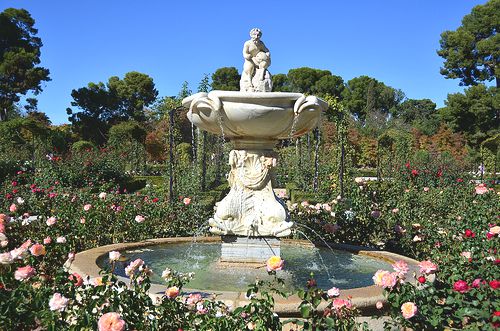 This describes quite well my trip to Barcelona after more than a month in North Africa.There’s always something jarring about the transition from the developing world back to the developed world.
This describes quite well my trip to Barcelona after more than a month in North Africa.There’s always something jarring about the transition from the developing world back to the developed world.
My journey to Spain began from Marrakech, Morocco, mirroring the Moorish invasion of the Iberian Peninsula that took place in the 8th century. Finding myself in manicured, modern cities after so much time in chaotic, dusty Morocco felt like I’d arrived on a different planet.

My first real stop in Spain was the sleepy town of Mont-roig del Camp, located about 90 minutes west of Barcelona on the Catalan coast. In addition to being the home of famed painter Joan Miró, Mont-roig del Camp was surprisingly well-manicured and developed for a local community. This is not to say that the surrounding countryside wasn’t wild and beautiful – it absolutely was. I just couldn’t imagine being able to ride a bike through Moroccan farmland on a path this smooth.

Much of what I love about Morocco and, indeed, the Arab Middle East as a whole is that everything there seems strange and beautiful in its disorder and disrepair. Although there is an indisputable charm to Barcelona’s broad avenues, grand buildings and sweeping scenery, one element that separated it from Morocco was the deliberate installations of art everywhere. Here on Las Ramblas, for example, the above-mentioned Miró created a simple but effective mosaic dedicated to a Catalan political prisoner who was executed during the Franco dictatorship that held Spain captive in the wake of the country’s civil war.

Indeed, public art is nothing short of common in Barcelona, as shown by this proverbial face in the crowd (Roy Lichtenstein’s “Barcelona Face”) near the seaside neighborhood of Barceloneta. What’s funny is that upon my first visit to Barcelona in 2008, arriving from Switzerland, I perceived the city as being fast-paced and chaotic. This time, however, it seemed so put together, so classy and so damn clean — I felt like I could eat trash off the ground.

Spain wouldn’t be Spain without a healthy dose of Catholicism. To be sure, one of my first stops upon arrival in the sleepy Andalusian town of Granada was the famous cathedral in the middle of the city, whose construction began in 1518, less than 30 years after the region was handed over from its then-Muslim rulers. Comparing Islamic and Catholic architecture is nothing short of futile. They do have one thing in common, as an Israeli guest at the Oasis Hostel in Granada so eloquently noted. “Imagine how far civilization would be,” he said, “if we’d devoted as much time, money and energy to technology throughout history as we did to ‘God.'”

Of course, now heavily Catholic Granada hangs onto its Islamic heritage as well, namely in the form of the Alhambra, which is allegedly Spain’s most-visited tourist attraction. I probably sound terrible for saying this, but after a solid month of mosques and medinas, I had literally no interest in going inside the Alhambra, especially given the steep ticket prices (16 euros per adult) and reports of massive crowds. I mean, you see how many people crowded around to see the sun set behind the thing, right?

Madrid was the first place in Spain that I noticed a significant presence of “Occupy” protesters. The movement started only weeks before I left the United States, and although I did see the remnants of housing protests in Israel, it wasn’t until arriving in Madrid that I saw full-on rage against the machine.

One welcome change from Morocco was the quality and extent of Spain’s public transportation. Rather than squeezing into an aptly-named “petit”Moroccan taxi with five other people, I was able to ride the Barcelona and Madrid metros to travel long distances. I’ve always had a strange fondness for metro rail systems, be it the shiny new Shanghai metro, Bangkok’s elevated SkyTrain or even the sketchy Subte in Buenos Aires. I’m tempted to say I like the Madrid Metro the best, although the urban core’s small size prevented me from making much use of it.

Serenity and green space are among some of the developed world luxuries I tend to take for granted, an ingratitude that was highlighted by my visits to spots like Madrid’s Parque del Retiro. Of course, much of Morocco is indeed rural and very green, but the question is really about accessibility — how exactly are you going to get to one of those proverbial pastures and how will you get back to civilization once you’re done there? In Madrid, on the other hand, this serene rose garden is just a 20-minute walk away from Puerta del Sol, the center of the city.

Robert Schrader is a travel writer and photographer who’s been roaming the world independently since 2005, writing for publications such as “CNNGo” and “Shanghaiist” along the way. His blog, Leave Your Daily Hell, provides a mix of travel advice, destination guides and personal essays covering the more esoteric aspects of life as a traveler.








